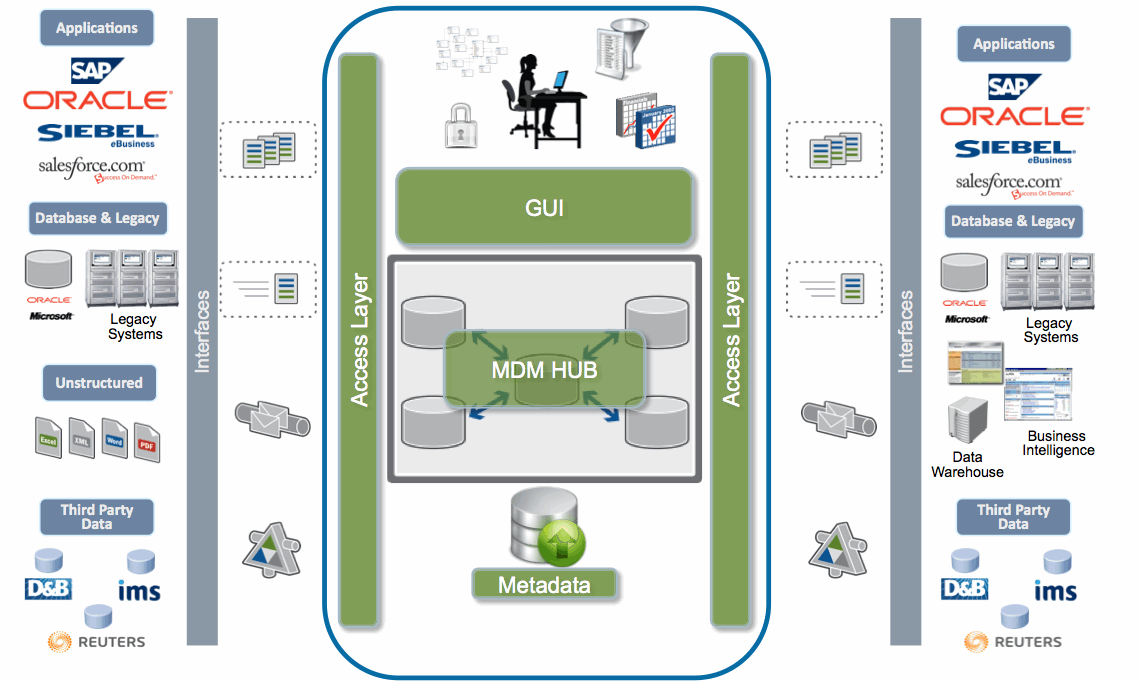KID : MDM Architecture
The MDM solution should provide the ability to decouple information from enterprise applications and processes to make it available as a strategic asset for use by the enterprise.
The MDM solution should provide the enterprise with an authoritative source for master data that manages information integrity and controls the distribution of master data across the enterprise in a standardized way that enables reuse. The primary motivation for this principle is to centralize the management of master data to reduce data management costs and improve the accuracy and completeness of that data. The MDM solution should provide the flexibility to accommodate changes to master data schema, business requirements and regulations, and support the addition of new master data. This improves the ability of a business to quickly respond to business changes that may require the addition of new master data elements or changes to existing master data.
The MDM solution should be designed with the highest regard to preserve the ownership of data, integrity and security of the data from the time it is entered into the system until retention of the data is no longer required. The objective of this principle is to ensure that core business data that is critical to the success of the enterprise will be secure and to comply with privacy laws and regulations.
Master Data Management - Typical Architecture
The MDM solution should be based upon industry-accepted open computing standards to support the use of multiple technologies and techniques for interoperability with external systems and systems within the enterprise. This will guide development of the architecture to remain open and flexible so it can easily integrate with a variety of vendor software that may already exist within the enterprise and any future unknown technologies.
The MDM solution should be based upon an architectural framework and reusable services that can leverage existing technologies within the enterprise. This principle guides the architectural decisions to leverage existing investments in technologies such as those that facilitate connectivity and interoperability or information integration where it makes sense in order to implement a MDM Solution.
The MDM solution should provide the ability to incrementally implement an MDM solution so that a MDM solution can demonstrate immediate value.
The unique challenges of an MDM program are often not immediately apparent, even to seasoned data management professionals.
KID offers MDM Architecture services that will assist you in defining the architecture and then implementing the architecture.